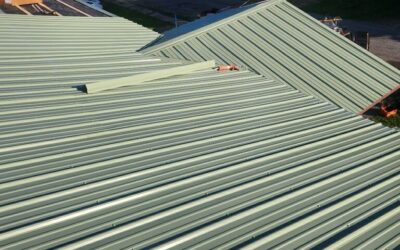“Introduction to Roofing Hammers and Hatchets”,
Introduction to Roofing Hammers and Hatchets
Your Complete Guide to One of Roofing’s Most Trusted Tools
Estimated Reading Time: 9 Minutes
Whether you’re a seasoned roofer or a curious DIY enthusiast exploring roofing tools, understanding the fundamentals of roofing hammers and hatchets is a must. These tools have been a staple in the roofing world long before the modern nail gun—and they’re not going anywhere anytime soon.
In this guide, we’ll break down everything you need to know about roofing hammers and hatchets, from their components to how to use them correctly, and even explore how they compare to newer tools like nail guns. If you’re looking to sharpen your knowledge or decide what tool to use on your next roofing job, read on!
🛠️ Table of Contents:
- Parts of a Roofing Hammer
- Features of a Roofing Hammer
- Antique Roofing Hammers and Hatchets
- How to Use a Roofing Hammer
- Roofing Hammer Versus Nail Gun
- The Importance of Proper Nailing
1. Parts of a Roofing Hammer
A roofing hammer (or roofing hatchet) is more than just a glorified claw hammer. It’s a specialized tool designed with features that cater specifically to the needs of shingle and tile installation.
Key Parts of a Roofing Hammer:
- Handle: Often made from wood, fiberglass, or steel, the handle is designed for a firm grip and durability.
- Head: The main striking surface used to drive roofing nails.
- Claw: A curved claw on one side of the head allows for easy nail removal.
- Magnetized Nail Holder: Some roofing hammers feature a magnet near the head to hold a nail for one-handed nailing.
- Gauge or Shingle Guide: A small adjustable tab or notch used to ensure consistent shingle exposure.
These components combine to make a roofing hammer one of the most versatile hand tools in the roofing industry.
2. Features of a Roofing Hammer
Roofing hammers may look simple, but they’re packed with features designed to save time and increase accuracy on the job.
Common Features:
- Weight and Balance: Most roofing hammers are between 16–22 ounces. They are weighted to reduce user fatigue while maintaining enough power to drive nails efficiently.
- Magnetic Starter Slot: This small but powerful magnet holds a nail in place, allowing roofers to start nails one-handed—essential when balancing on a pitched roof.
- Depth Gauge: Often included in the form of a slider on the hatchet’s head, this helps maintain uniform shingle spacing for a professional finish.
- Multi-Use Blade: Many hatchets feature a sharpened edge opposite the hammer head, allowing them to trim shingles, felt, or underlayment.
When selecting a roofing hammer, look for a model that fits comfortably in your hand, offers durability, and features that meet the scope of your project.
3. Antique Roofing Hammers and Hatchets
Before pneumatic tools and electric nailers, roofing hammers were the heart of the roofing trade. Vintage hammers were typically handcrafted from high-carbon steel and featured wooden handles that aged beautifully over time.
Why People Still Love Antique Roofing Hatchets:
- Craftsmanship: Older hammers often feature intricate metalwork and superior balance.
- Collectibility: Many roofers and tool enthusiasts collect vintage hatchets for display or as functional tools in traditional restoration projects.
- Durability: Some antique roofing tools are still in use today, a testament to their build quality.
If you’re lucky enough to find one at a garage sale or online auction, a good antique roofing hatchet can still serve you well or make a great conversation piece in your shop.
4. How to Use a Roofing Hammer
Using a roofing hammer properly is a skill that can dramatically affect the quality and longevity of your roof installation.
Steps for Using a Roofing Hammer Effectively:
- Load a Nail: Use the magnetic holder to secure the nail.
- Position the Shingle: Ensure it’s aligned with the chalk line or guide tab.
- Drive the Nail: Use a smooth, straight motion to drive the nail flush with the shingle without crushing the granules.
- Check Exposure: Use the built-in gauge or guide tab to verify the exposure between courses.
Pro Tips:
- Always wear gloves and safety glasses.
- Don’t overdrive the nails, as it can damage the shingles.
- Avoid driving nails at an angle to prevent blow-through or loosening over time.
Mastering the roofing hammer may take time, but the control and finesse it offers are worth the effort.
5. Roofing Hammer Versus Nail Gun
With the rise of power tools, many professionals now opt for nail guns to speed up roof installations. However, roofing hammers still have their place, and there are pros and cons to both.
Roofing Hammer – Pros:
- More control over nail placement
- No power source needed
- Ideal for small repairs or touch-ups
- Easier to use on steep pitches or tight corners
Roofing Hammer – Cons:
- Slower for large jobs
- More physically demanding
Nail Gun – Pros:
- Fast and efficient
- Great for large-scale projects
- Consistent nail depth (when set up correctly)
Nail Gun – Cons:
- Requires air compressor or battery
- Greater risk of misfires
- Less precise in tight or awkward areas
In many professional setups, both tools are used—nail guns for main installation, and hammers for detail work or problem areas.
6. The Importance of Proper Nailing
Nailing might seem like a minor detail, but improper nailing is one of the most common causes of roof failure. Whether using a hammer or nail gun, the nails must be placed and driven correctly.
Common Nailing Mistakes:
- Under-driven nails leave shingles loose and vulnerable to wind uplift.
- Over-driven nails cut into the shingles, reducing their holding power.
- Angled nails can cause shingles to crack or lift.
- Wrong placement (too high or too low) can void warranties.
Roofing hammers give roofers a hands-on approach to nailing, making it easier to ensure proper technique on every shingle.
Final Thoughts: Why You Should Still Know Roofing Hammers
In an era dominated by technology and power tools, it might seem outdated to focus on a traditional hand tool like a roofing hammer. But there’s a reason this tool has stood the test of time.
Whether you’re patching a leak, installing a new roof, or restoring a historic home, roofing hammers and hatchets offer precision, control, and craftsmanship that are difficult to match.
Bonus: Our Top 3 Roofing Hammer Recommendations
1. Estwing Shingler’s Hatchet
- Forged steel construction, built-in gauge, and shock-reduction grip.
2. AJC Roofing Hatchet with Gauge
- Professional-grade with a magnetic nail holder and shingle guide.
3. Stortz Adjustable Roofing Hatchet
- Adjustable exposure gauge, ideal for precision work.
SEO Tags to Include:
- roofing hammer vs nail gun
- how to use a roofing hammer
- antique roofing hatchet
- best roofing hammer
- roofing tools guide
- shingle installation tools
- proper nailing techniques for shingles
Looking for Professional Roofing Help in Northeast Ohio?
If you’re working on a roofing project in Youngstown, Cleveland, Akron, or surrounding areas, S&K Construction And Remodeling LLC can help! We’re Owens Corning Preferred Contractors and provide top-tier roofing services, repairs, and installations. Whether you’re hiring a crew or want expert advice, we’re here to support your project every step of the way.
📞 Call us today or visit our website to schedule a free consultation. Financing options available!
 (440) 307-2060
(440) 307-2060





